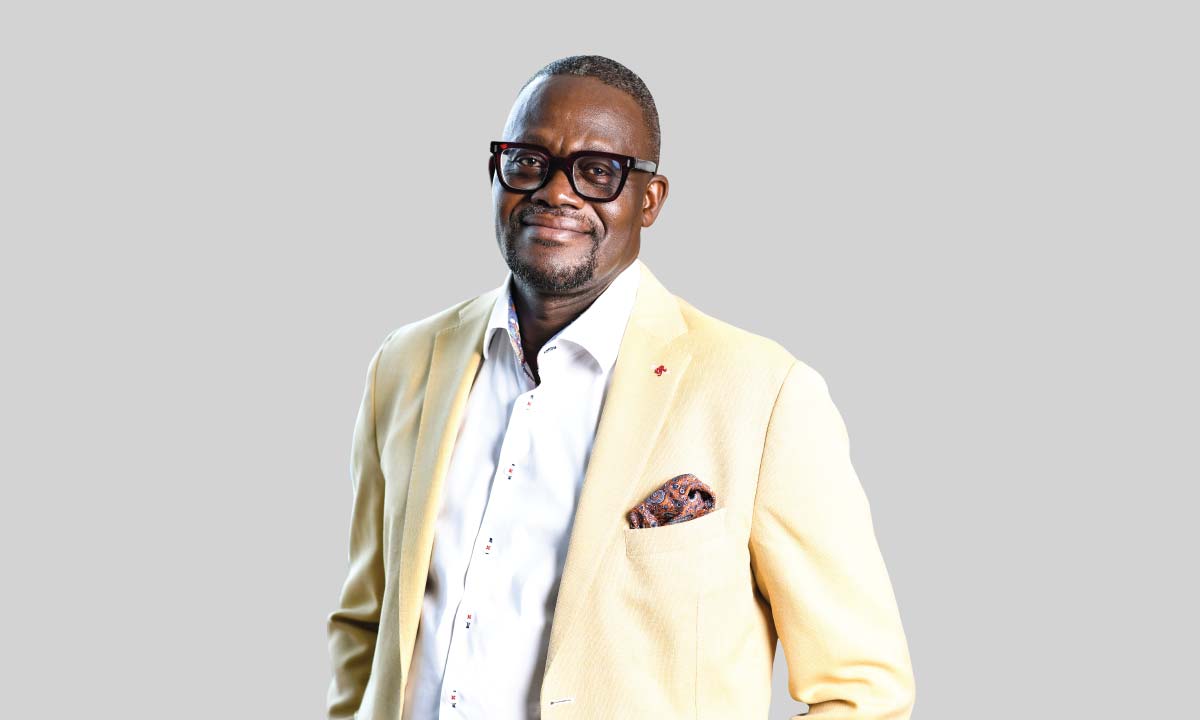Information and communications technology (ICT) has evolved significantly since the inception of early computers and the internet. Prior to GITEX, the world’s largest tech event, we interviewed Ekow Nelson, vice president of Ericsson Middle East and Africa, to discuss 5G, its adoption in the region and the future of wireless communication – 6G technology.
Nelson, also serving as the country general manager for Ericsson United Arab Emirates, elaborated on the company’s initiatives to leverage technology for a more sustainable future.
What is Ericsson showcasing at this year’s edition of GITEX? Why do you consider GITEX to be an important event for Ericsson to participate in?
The UAE is now the home of the fastest 5G network, with Etisalat by e& leading globally, according to Ookla. This is a proud moment for the UAE, the home of GITEX, and signified a shift in global communications technology leadership, with the Middle East at the forefront.
GITEX is an opportunity to showcase the powerful impact of limitless connectivity and what lies ahead, as we “Imagine Possible” with our partners, customers, and key government stakeholders to push the frontiers of technological innovation.
In the run-up to the global climate change conference, we will also be demonstrating how high-performing networks can help realize a digital net-zero future while enabling new experiences for consumers and enterprises.
Visitors to the Ericsson stand at GITEX can engage with subject matter experts and discover demos of cutting-edge 5G technologies, like extended reality (XR).
Read more: Ericsson is leveraging new ways to enable operators monetize 5G
It is said that technology can be harnessed to create a sustainable future. In what specific ways can this be achieved? What aspects or applications of technology help humanity achieve sustainability?
We at Ericsson drive sustainable development by building more energy-efficient networks. Large-scale deployment of the technology is expected to significantly contribute to achieving the the International Telecommunication Union’s target of reducing greenhouse gas (GHG) emissions in the ICT industry by 45 percent between 2020 and 2030.
We know from our research that the ICT sector has the potential to reduce total industrial emissions worldwide by up to 15 percent, although it accounts for only 1.4 percent of the global carbon footprint. It is therefore crucial that we take part in helping curb emissions. We are also working with our partners to develop solutions for other high-emitting industries to address our global climate challenge.
Our own 5G-powered Smart Factory in Texas has been recognized by the World Economic Forum as a global front-runner in the Fourth Industrial Revolution. The Forum has awarded the site with its prestigious “Global Lighthouse” designation in recognition of Ericsson’s deployment of next-generation technology at the site and its subsequent impact on sustainability.
The technology presents an open innovation platform that serves a multitude of sustainable use cases – from smart farms to smart factories – by advancing automation, increasing productivity, boosting energy efficiency, conserving resources and strengthening climate resilience.
How has 5G changed telecommunications in particular? Or the way we do business and live our lives in general?
5G connectivity is driving transformative advancements. With faster speeds, reduced latency and increased capacity, 5G enabled seamless connectivity and new forms of interaction. This innovation will integrate digital content with physical space into everyday life. Instead of smartphones, wearables may become the primary communication devices.
These new devices and interaction models will impose greater capacity and performance requirements on ICT networks, driving the need for ultra-fast connectivity. The future of 5G networks augmented with artificial intelligence capabilities, will increase productivity through automation. AI and machine learning platforms are helping communications service providers run more automated, intelligent and efficient network, IT and service operations, as well as deliver more cognitive, more personalized and richer customer experiences.
What’s the state of 5G adoption in the GCC region?
GCC countries are frontrunners in global 5G network deployments and service offerings, such as enhanced mobile broadband (eMBB) and fixed wireless access (FWA).
The June 2023 edition of the Ericsson Mobility Report estimates that the number of 5G subscriptions in the GCC region will grow from 13 million to 70 million between 2022 and 2028. By the end of the period, they are projected to account for 86 percent of total subscriptions.

In what direction is connectivity evolving? What role is Ericsson playing in developing the next level of connectivity?
6G is poised to usher in a new era of truly omnipresent intelligent wireless communication. The vision for 6G is centered around creating a seamless reality where the digital and physical worlds have merged. This will facilitate novel forms of interaction, enabling remote work opportunities, and providing immersive experiences of distant places and diverse cultures. In doing so, 6G will play a pivotal role in fostering a more sustainable, efficient and human-friendly society.
The networks of the future must extend beyond traditional connectivity, meeting the demands of cutting-edge applications such as the Internet of Senses and communication among intelligent machines.
At Ericsson, one of our current priorities is to ensure that the robust 5G infrastructure of today continues to evolve toward the 6G era. We are also conducting intensive research into 6G networks and have published a comprehensive whitepaper on the topic titled 6G spectrum – enabling the future mobile life beyond 2030.
6G will be a step-change in terms of bridging the digital and physical world to create a cyber-physical continuum with connected intelligent machines, the Internet of Senses, and a connected sustainable world. This continuum will be enabled by 6G’s limitless connectivity, trustworthy systems, cognitive networks and a pervasive network computing fabric.
For more special interviews, click here.








